What if we told you that we put together an All-America team and we didn't include Clemson's Dexter Lawrence or Michigan's Rashan Gary or Washington's Greg Gaines or anyone from Alabama's defensive front? Sounds crazy, right? But that's how good the defensive lines are around the country this season.
And the D-lines are just the start of it. How do you choose a quarterback from a group that includes an elite passer like West Virginia's Will Grier, an elite runner like Arizona's Khalil Tate and UCF's McKenzie Milton, a guy who just finished an undefeated season? And how good is the running back class when Boston College's AJ Dillon, Florida Atlantic's Devin Singletary and Washington's Myles Gaskin don't even sniff All-America status?
The end result, of course, is a preseason All-America team that has showcased some elite skills and a college football season that promises to have an abundance of stars waiting to do something special.
OFFENSE

QB: Will Grier, West Virginia
Five quarterbacks were taken in the first round of the 2018 NFL draft, meaning there's a new guard vying for All-America honors this season. No one has a better case than Grier, who was exceptional last season, despite sitting out the bulk of the final three games with an injury. Project his numbers over 13 starts and he'd have posted 4,500 yards and 44 touchdown throws -- numbers that would've mirrored Baker Mayfield's.

RB: Bryce Love, Stanford
There's no doubt about who the nation's best returning running back is. Last season, Love ran for 2,118 yards and 19 touchdowns and averaged better than 8 yards per carry -- the best rate by a Power 5 back with at least 200 carries since Reggie Bush in 2005. Now the only question is, what does Love do for an encore?

RB: Jonathan Taylor, Wisconsin
Taylor came up just 23 yards shy of 2,000 last season, toppling Adrian Peterson's record for rushing yards as a freshman. Taylor had 10 100-yard games -- and three 200-yard performances -- last season, and he gets the added advantage of seeing the bulk of his talented offensive line return for his sophomore campaign. That figures to be a nightmare for Big Ten defenses.

WR: David Sills V, West Virginia
As a 13-year-old quarterback, Sills committed to USC. It has been a winding path from there, but last season Sills made it clear he'd finally found a fit as West Virginia's top receiving threat. Sills finished 20 yards shy of 1,000 on the season, but there was no bigger threat in the country to find the end zone. His 18 touchdowns tied for the national lead and were the second-most by a Power 5 receiver in a season since 2012.

WR: A.J. Brown, Ole Miss
No Power 5 receiver returns this season having averaged more yards per game than Brown did in 2017 (114). Brown finished second in the SEC in catches (75), first in yards (1,252) and tied for first in touchdowns (11). And while there are lingering questions about Brown's ability to repeat those numbers without QB Shea Patterson, it's worth noting that after Patterson went down with an injury last season, Brown caught 36 passes for 535 yards and five touchdowns in his final five games.

TE: Noah Fant, Iowa
No tight end in the country had more touchdown grabs last season than Fant's 11 -- a total that also set a Big Ten record for the position. His 30 catches and 494 yards put him near the top of the board for tight ends, too, despite playing in an offense designed around the run game.
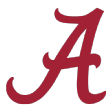
OT: Jonah Williams, Alabama
Williams has started all 29 games of his career at Alabama, working at both left and right tackle and emerging as one of the pre-eminent blockers in the country. Last season he had 22 knockdown blocks, according to Alabama, and graded out at 86.7 percent. In 831 offensive snaps last season, Williams allowed just eight pressures and missed a total of 10 assignments. That's the type of consistency that has elevated the Crimson Tide's line to elite status.

OG: Beau Benzschawel, Wisconsin
Benzschawel has started 36 consecutive games for Wisconsin, including all 14 at right guard last season, when Taylor set a freshman rushing record with nearly 2,000 yards. Benzschawel is part of a Wisconsin line that is as experienced and talented as any in the Big Ten.

C: Ross Pierschbacher, Alabama
After three seasons at guard, Pierschbacher is moving to center in 2018 -- yet another showcase of his talent and versatility. He has started 42 games in his career and Alabama has had a 100-yard rusher in two-thirds of them. When running behind left guard last season, Alabama backs averaged 8.2 yards per carry, the third-best rate in the country.

OG: Michael Deiter, Wisconsin
Deiter started all 14 games at left tackle for Wisconsin last season but figures to move back inside for 2018. His size makes him an intimidating blocker, but he showcased his athleticism, too, with a 4-yard rushing touchdown last season against Illinois. Wherever Deiter lines up -- backfield, tackle, guard -- he's a one-man wrecking crew.

OT: Dalton Risner, Kansas State
Risner earned All-America status from several outlets last season and picked up his second consecutive All-Big 12 nod. It's for good reason. Risner graded out at a 90.3 mark in 2017, according to Pro Football Focus, including a ridiculous 98.9 mark on pass-blocking efficiency, and allowed just three pressures during the regular season.
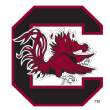
AP: Deebo Samuel, South Carolina
A broken leg ended Samuel's 2017 season after just three games, but he's back for 2018 and warrants consideration as one of the best threats in the country with the ball in his hands. Look no further than his explosive 2016 campaign, when Samuel had 1,320 all-purpose yards and became one of just six Power 5 players in the past five years to record a passing, rushing, receiving and kickoff-return touchdown in the same season.
DEFENSE

DE: Clelin Ferrell, Clemson
Clemson's defensive line has four potential first-round draft picks starting, so it's saying something that it was Ferrell who led the team in sacks (9.5) and tackles for loss (18) in 2017. Since emerging as a star down the stretch in 2016, Ferrell has been as fierce an edge rusher as there is in college football. He has tallied 24 tackles for loss in his past 17 games, including twice last season totaling five or more in a single contest.

DT: Christian Wilkins, Clemson
As if Clemson's defensive line wasn't already going to be good, the surprising news that Wilkins would return for his senior season pushed this unit into the potential "greatest line of all time" conversation. Wilkins isn't eager to discuss that, however. He has more immediate goals, namely getting the Tigers to the College Football Playoff for the fourth consecutive season. Wilkins is a beast in the interior, but his versatility -- working off the edge, working in the offense's power package, catching passes on fake punts and even playing a little safety in this year's spring game -- is what sets him apart from other 300-pound defensive linemen.

DT: Ed Oliver, Houston
As a true freshman in 2016, Oliver recorded five sacks. Four of them came against future Heisman Trophy winners (Mayfield and Lamar Jackson). In other words, Oliver had a knack for finding the spotlight from an early stage. Last season, the true potential of Houston's megastar emerged, with Oliver racking up 73 tackles, 16.5 for a loss, two forced fumbles, seven QB hurries, 5.5 sacks and three passes defended. There's arguably not a player in college football who affects the game more than Oliver. He's quite simply a wrecking ball on the defensive line.

DE: Nick Bosa, Ohio State
Bosa's numbers are impressive in their own right. He led Ohio State last season with 8.5 sacks, 16 tackles for loss and nine QB hurries. But then remember that Bosa hasn't been a full-time starter and has shared reps on a deep defensive line, and there's potential for those stats to improve exponentially in 2018. His older brother, Joey, blossomed into the No. 3 overall pick in the NFL draft after his junior year. Nick could follow suit.

LB: Devin White, LSU
How impactful was White for last season's LSU defense? His 133 tackles meant he either assisted or made the tackle on one out of every six offensive plays run against the Tigers. It's a total, too, that ranks second among returning Power 5 players and puts him at center stage among the nation's elite linebackers. Add in 4.5 sacks, three interceptions and three forced fumbles, and it's clear White is going to give a lot of SEC offensive players nightmares in 2018.

LB: T.J. Edwards, Wisconsin
Last season, the Badgers' defense ranked third nationally in points allowed, first in passer efficiency and ninth in yards allowed per rush. How does a unit do everything so well? Start with the man in the middle. Edwards was a star for Wisconsin, finishing second on the team with 81 tackles, including 11 for a loss, while picking off four passes and breaking up seven others.

LB: Devin Bush, Michigan
There's a long and distinguished history of linebackers flourishing in Don Brown's system, and Bush figures to be the next man to etch his name on that list. His 102 tackles led all Michigan defenders last season and ranked sixth in the Big Ten. He added five sacks, 9.5 tackles for loss and eight pass breakups, which ranked third among linebackers nationally. Now remember that he'll be surrounded by one of the most experienced defenses in the country, and it's possible Bush makes a run at defensive player of the year in 2018.
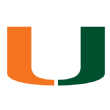
S: Jaquan Johnson, Miami
If the turnover chain was the breakout star of last season's Miami team, it was Johnson who staked his claim as the chain's rightful owner. Johnson racked up six takeaways and four pass breakups in 2017 to go with a team-high 96 tackles (third-most in the ACC by a defensive back). Both the chain and Johnson are back for 2018, which gives Miami's defense a chance to once again be among the best units in the country.

S: Taylor Rapp, Washington
It's hard to use numbers to make Rapp's case as one of the top defensive backs in the country because quarterbacks know better than to test his side of the field. A first-team All-Pac 12 selection last season, Rapp finished with 59 tackles, 3.5 for a loss, plus an interception and a forced fumble. But that's just the tip of the iceberg. Washington's secondary, led by Rapp, allowed just 26 completions last season on throws of 15 yards or more, the seventh-lowest total in the nation.
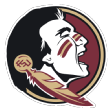
CB: Levonta Taylor, Florida State
In what was otherwise a horrific 2017 for Florida State, Taylor provided a distinct silver lining, developing into arguably the most dominant shutdown corner in the country. According to Pro Football Focus, Taylor faced the highest number of snaps last season without allowing a touchdown. Since he also recorded a pick-six against Florida, Taylor officially outscored every receiver he went up against. His size -- 5-foot-10, 181 pounds -- isn't exactly intimidating, but he's as technically sound a cover corner as you'll find.

CB: Greedy Williams, LSU
As a freshman last season, Williams quickly established himself as one of the nation's elite playmakers. He finished 2017 with six interceptions (tied for third nationally) and 17 total passes defended (12th nationally) -- numbers that certainly supported his nickname. The question for 2018 is, now that Williams is a known commodity, how many quarterbacks will dare throw his way?
SPECIAL TEAMS
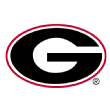
K: Rodrigo Blankenship, Georgia
Blankenship was perfect last season on field goal tries from inside 40 yards, connected on 20 kicks total, made 6 of 9 attempts beyond the 40-yard mark and didn't miss a PAT in 63 tries. But two things put Blankenship over the top here. The first is his 55-yard kick against Oklahoma that changed Georgia's Rose Bowl fortunes just before the half. The second is the glasses. Look good, kick good.

P: Mitch Wishnowsky, Utah
No punter in the country returns for 2018 having netted more yards per kick than Wishnowsky did last season (42.21). Just 13.5 percent of his total punts in 2017 were returned at all, while nearly 20 percent were downed inside the opponent's 10-yard line. Utah's specialists are the clear front-runners nationally, and Wishnowsky is a big reason why.
